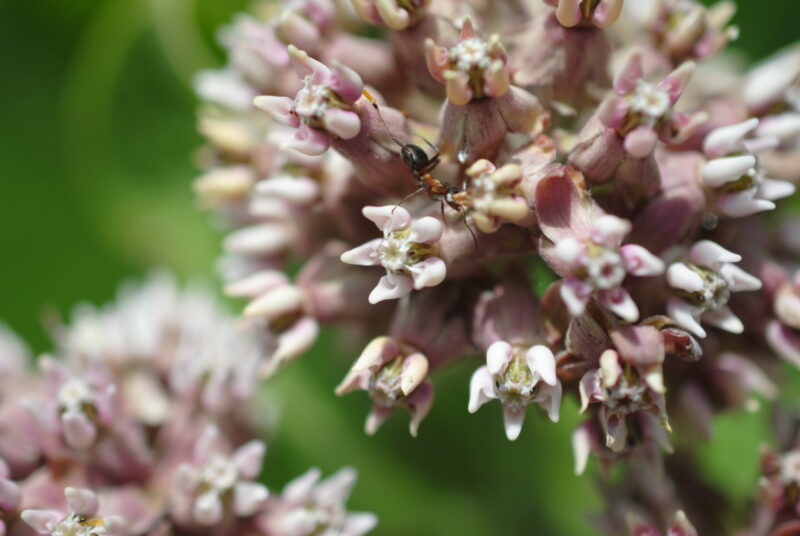
Pollinator Gardening
Across North America and world-wide, pollinators are in decline due to multiple, overlapping challenges. Urban development and large-scale agriculture reduce nesting sites and floral resources. Large areas of turf, pavement, and monoculture crops create “gaps” between the wild spaces pollinators depend on. Insecticides, particularly neonicotinoids, can harm pollinators directly or indirectly by contaminating nectar and pollen. Shifts in temperature and rainfall affect bloom times and disrupt the synchronization between plants and pollinators, making resources scarce.
For More Information on becoming a
Cerfified NDSU Pollinator Garden:
Gardening for pollinators is one of the easiest ways to support pollinator conservation. Pollinator gardens provide pollen and nectar sources, protection from pesticides, suitable host plants for eggs and larvae, shelter from predators, and overwintering habitat. Creating pollinator-friendly spaces—even small ones—can make a big difference for the future of pollinators. Here are a few simple steps to creating suitable habitat:
-
- Choose a planting site with full sun and visibility from above to attract migrating pollinators.
- Plant native and ornamental flowers with a succession of blooms from early spring to late fall.
- Diversify plantings to support a wide range of pollinators.
- Provide shelter such as undisturbed soil, hollow stems, or bee hotels.
- Reduce or avoid pesticide use and follow Integrated Pest Management (IPM) practices.
- Create connected habitats in yards, boulevards, school grounds, and community gardens.
Offer water sources like shallow dishes with pebbles for insects to perch on.
Pollinator gardens provide resources often missing in modern landscapes: food from nectar and pollen, host plants for eggs and larvae, safe places to nest and overwinter, and refuge from pesticides. By planting flowering trees, shrubs, perennials, and annuals, we can transform backyards, boulevards, and community spaces into stepping-stones that connect larger habitat reserves, making survival easier for bees, butterflies, hummingbirds, and other pollinators.
For more information on creating prime pollinator habitat, check out these resources:
For more information on how to incorporate a pollinator garden into your landscaping, check out the NDSU Extension publication:
Bee-utiful Landscapes: Building a Pollinator Garden
This comprehensive guide will help you identify major pollinators, choose plants that will provide a continuous source of nectar and pollen, and instructions on the safe use of pesticides.
Another helpful resource for choosing pollinator plants is the
National Wildlife Federation Native Plant Finder
Input your zip code to find a list of plants ranked by the number of pollinators they support.
